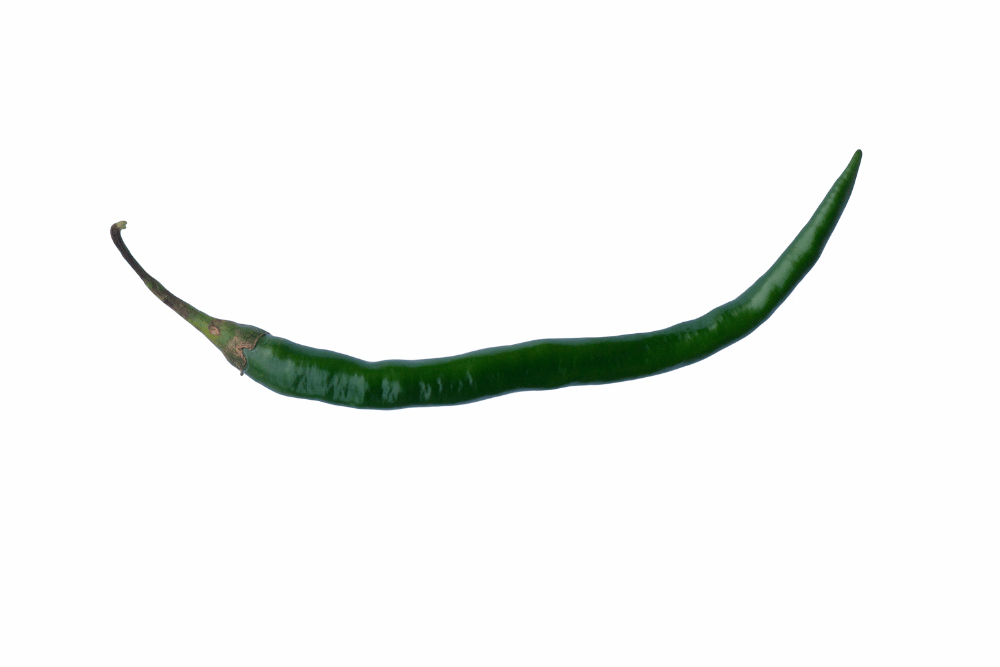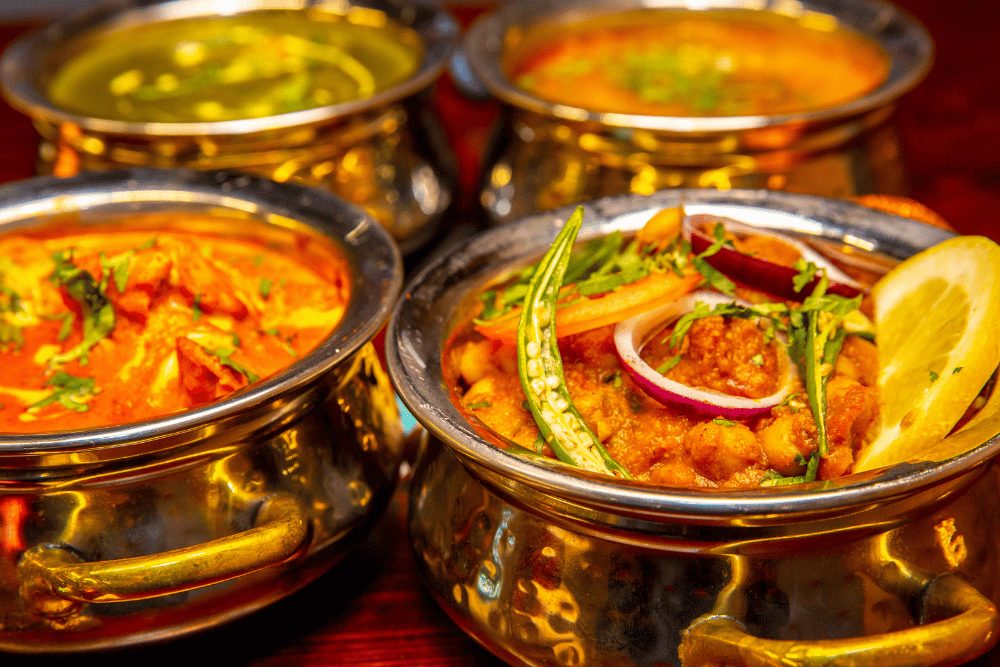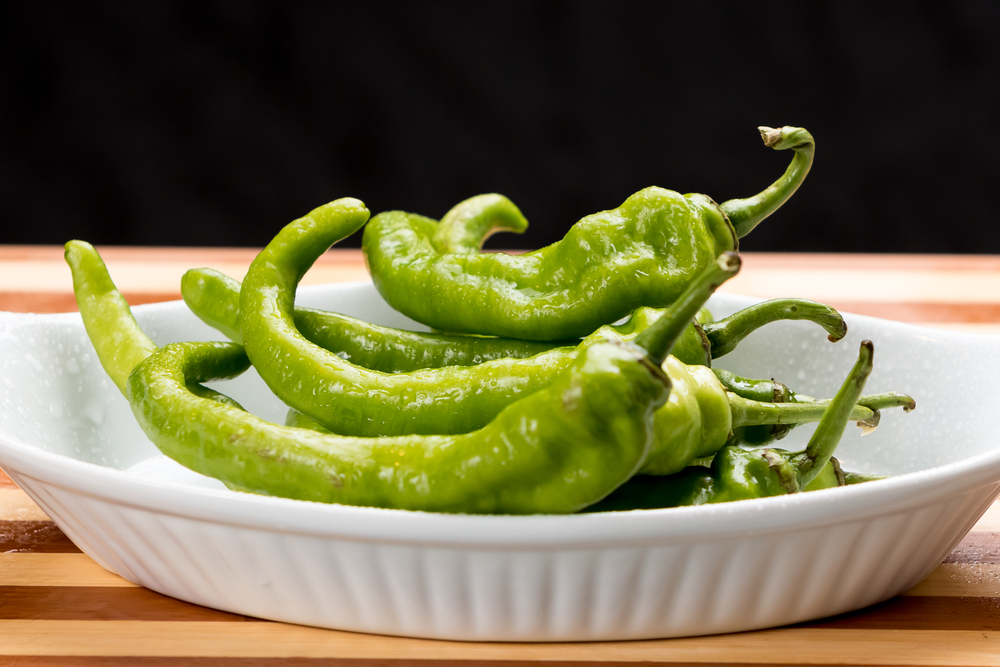As the most popular hot pepper in Indian cuisine, jwala peppers are grown for their heat, appley flavor, high productivity, and ornamental appeal. The small curved peppers resemble human fingers in length and wrinkly nature.
What Is A Jwala Pepper?
A jwala pepper is an elongated, narrow, finger-like pepper in the Capsicum annuum species. It is the most popular hot pepper in India, grown for its heat, flavor, and high productivity.
Origins
Jwala peppers are commonly grown in the Gujarat region of India, their native country. They are considered an heirloom pepper variety in the country.
Other Names
Like most hot and sweet peppers, jwala peppers go by other names. You’ll come across different names for the peppers, such as:
- Pusa jwala
- Indian jwala peppers
- Finger hot chile peppers (green finger hot peppers/red finger hot peppers)
- Indian finger hot peppers
- Finger hot Indian peppers
Size And Shape
Jwala peppers are also called finger hot chili peppers because they resemble human fingers in shape. They are elongated and slender peppers that measure about four inches long at maturity, about the size of the average human finger.
The small thin pepper pods look like curved fingers because of their tapered curve.
Color
As three-color cycle peppers, jwala peppers grow from mid or light green to orange and finally to bright red at full maturity. These three colors are usually present on the plant simultaneously, making them ideal ornamental peppers.
Texture
The skin of jwala peppers is wrinkled and glossy, covering the thin walls of the peppers and the slender cavity.

What Do Jwala Chilis Taste Like?
Did you know there are spicy varieties of apples? Jwala peppers taste like spicy apples. They have a slightly fruity flavor reminiscent of apples with a kick of heat.
How Hot Are Finger Hot Peppers?
Jwala peppers or finger hot chili peppers are fairly mild hot peppers with a score of 20,000-30,000 Scoville Heat Units. Some report that the peppers register 5,000-50,000 SHUs on the Scoville Scale, which could be possible as the peppers are usually harvested at different maturation stages.
Like other peppers, the capsaicin levels in jwala peppers increase as the pods stay on the vine longer.
Green jwala peppers (green finger hot peppers) harvested young will have the lowest heat, while the red ones left to ripen on the plant will have the highest heat.
Compared to the jalapeno, which scores 2,500-8,000 SHUs, the Indian jwala pepper is 3 to 8 times hotter.
The least spicy jwala chile has about the same heat level as the hottest serrano (23,000 SHUs). The mildest rocoto, tabasco, and cayenne peppers have an equal heat level as the hottest jwala pepper.
The heat range for jwala peppers belongs more to the fairly mild heat range, even as the peppers are described as hot in the name finger hot peppers. “Jwala” means “intense flame” or “extreme fire” in Sanskrit and “volcano” in Hindi.
What Is The Best Way To Eat Jwala Peppers?
Indian cuisine typically features jwala peppers as the staple Indian chili pepper. They are a particularly excellent addition to Indian curries.
Besides spicy foods like curries, you can eat jwala peppers in the following ways:
- As pickled peppers.
- As roasted, fried, or sautéd peppers.
- In hot enchilada sauce.
- As jwala green chili hot sauce.
- As a spice for salsas, dips, appetizers, and other hot sauces.
- In raw or fresh form in sandwiches, salads, and relish platters.
- As a hot spice for popular Indian dishes like pakoras, biryanis, bhajis, and dals.
- As jwala pepper flakes and jwala pepper powder. (The peppers are easy to dry and grind).

Where To Buy Jwala Peppers
You’ll find jwala peppers in Asian and Indian specialty stores. If you don’t have one nearby, you can find dried peppers, chili powder and flakes, and hot sauces online.
How Do You Grow Jwala Peppers?
Jwala peppers are grown like other peppers. They have similar requirements of full sun and well-drained, fertile soil.
The open-pollinated peppers are relatively easy to grow. You can buy seeds online from Amazon and other pepper seed outlets. Establish the seeds indoors 8-10 weeks before the last frost.
When the pepper seedlings are ready, transplant them outdoors, preferably in sand-to-loam soil with a pH of 5.5 to 7. Jwala pepper plants are excellent potting plants, but you can also plant them directly in the garden.
Use a plant spacing of 18-24 inches to allow enough room for the umbrella-like plants to thrive and produce profusely. It takes 80-100 days after transplanting for the fruit to mature.
Because of their beautiful display of green, orange, and red colors simultaneously, many home gardeners grow jwala peppers as farmhouse landscape plants and houseplants.
Substitutes For Jwala Peppers
You can replace jwala peppers with cayenne peppers, serranos, tabasco peppers, or chile de arbols. The flavor profiles will vary, but the heat levels are close. Thai jinda peppers are also an excellent jwala substitute but are hotter at around 75,000 SHUs.

